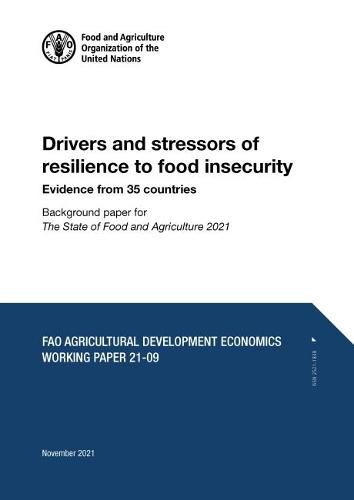Readings Newsletter
Become a Readings Member to make your shopping experience even easier.
Sign in or sign up for free!
You’re not far away from qualifying for FREE standard shipping within Australia
You’ve qualified for FREE standard shipping within Australia
The cart is loading…






Resilience is often associated with multivalued and multi-faceted strategies, programs, and projects. After approximately 15 years of empirical evidence in the literature, few research questions remain unexplored and unanswered, especially with the recent occurrence of a global pandemic. In this paper, we are assessing whether there are few and consistently relevant elements that determine resilience capacity as well as investigating which shocks are most dramatically reducing resilience. We also investigate which coping strategies are most frequently adopted in the presence of shocks. Our results show that diversification of income sources, education, access to land, livestock, and agricultural inputs, are the main drivers of households’ resilience capacity. Moreover, the most prevailing shocks are found to be natural, health and livelihood-related shocks. In addition to this, we show that reducing the quantity and quality of food consumed, seeking an extra job, selling assets, taking credit, relying on relatives and social networks are the most adopted coping strategies. Finally, we found that coping strategies are able to mitigate the adverse effects of shocks on resilience capacity; however, they are not sufficient to offset their long-term negative consequences. Our conclusion is that adequate investments in resilience are conditional to a) engaging with activities that are broadly consistent across countries and b) fine-tuning the interventions based on context-specificity
$9.00 standard shipping within Australia
FREE standard shipping within Australia for orders over $100.00
Express & International shipping calculated at checkout
Resilience is often associated with multivalued and multi-faceted strategies, programs, and projects. After approximately 15 years of empirical evidence in the literature, few research questions remain unexplored and unanswered, especially with the recent occurrence of a global pandemic. In this paper, we are assessing whether there are few and consistently relevant elements that determine resilience capacity as well as investigating which shocks are most dramatically reducing resilience. We also investigate which coping strategies are most frequently adopted in the presence of shocks. Our results show that diversification of income sources, education, access to land, livestock, and agricultural inputs, are the main drivers of households’ resilience capacity. Moreover, the most prevailing shocks are found to be natural, health and livelihood-related shocks. In addition to this, we show that reducing the quantity and quality of food consumed, seeking an extra job, selling assets, taking credit, relying on relatives and social networks are the most adopted coping strategies. Finally, we found that coping strategies are able to mitigate the adverse effects of shocks on resilience capacity; however, they are not sufficient to offset their long-term negative consequences. Our conclusion is that adequate investments in resilience are conditional to a) engaging with activities that are broadly consistent across countries and b) fine-tuning the interventions based on context-specificity